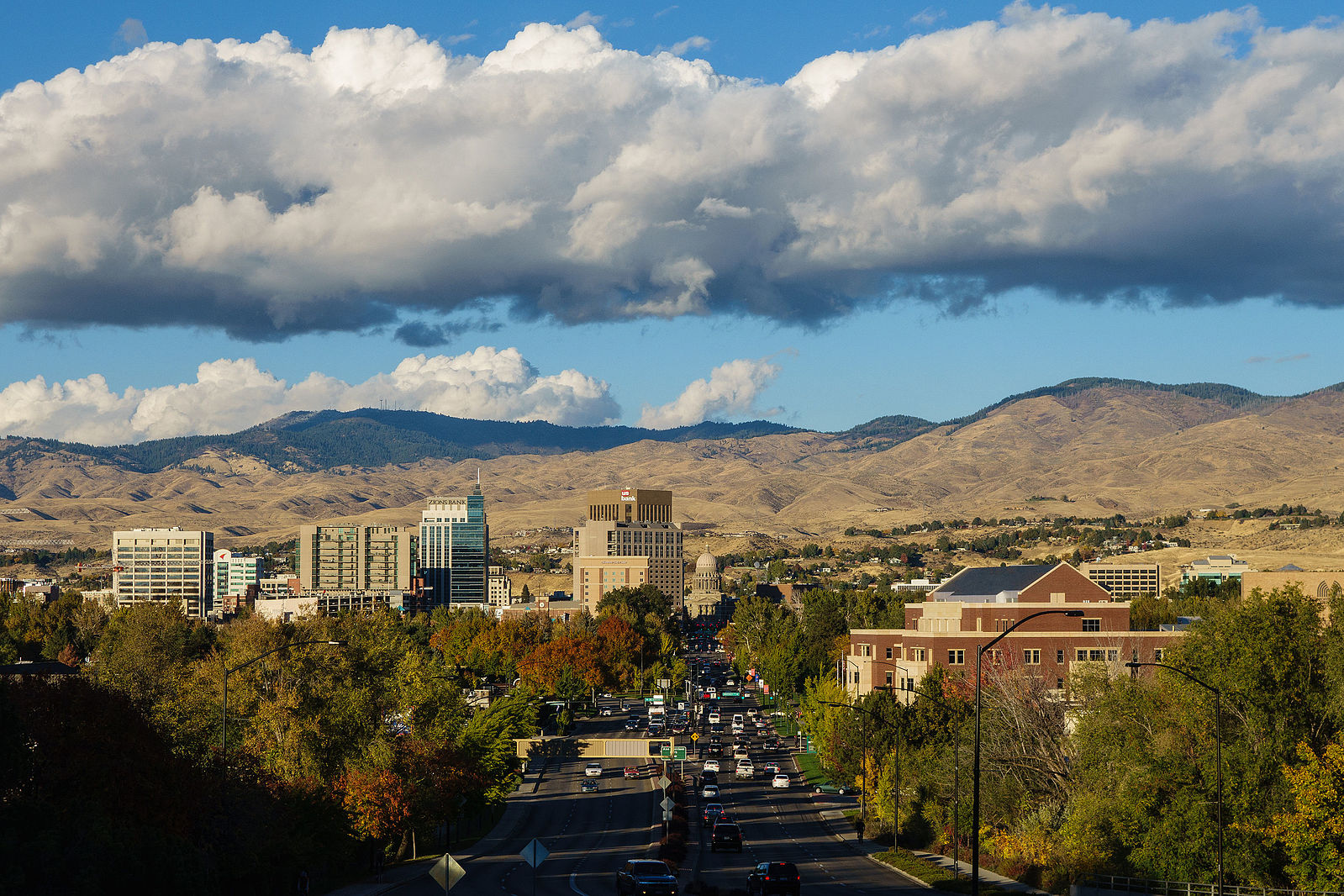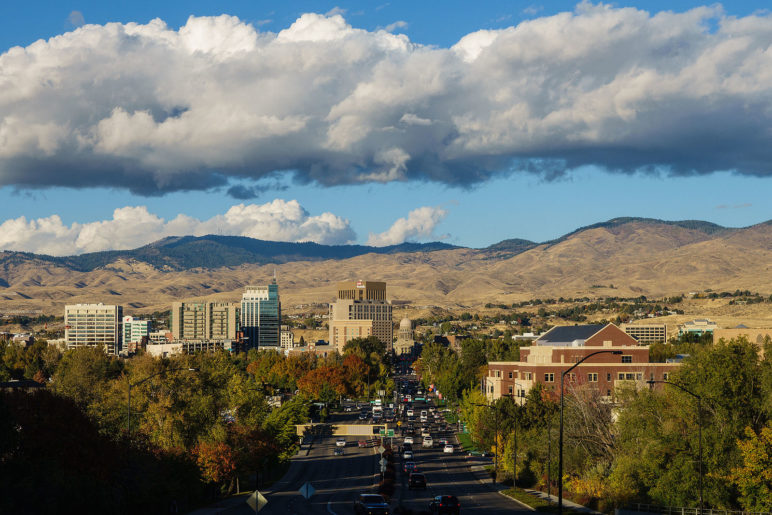As COVID-19 hit the United States, Boise’s quality of life and low cost-of-living attracted a wave of people, jobs, and traffic. Now comes news that among the arrivals this spring is a fleet of zombies: high-tech e-scooters that aim to carry more riders around downtown and scare off big rigs for short trips. It’s an invasion of the carbon snatchers.
It’s an invasion of the carbon snatchers.

Boise will be the first city in the US to deploy a fleet of electric kick scooters that can self-drive at low speeds, responding to a user’s summons on a smartphone, parking themselves safely at the end of the trip, and trundling off to recharge when needed. The three-wheeled scooters rely on small on-board cameras and remote operators to pilot the vehicle slowly along sidewalks and roadsides. Spin, a Ford subsidiary, will offer the new service in partnership with Tortoise and Segway Ninebot. Spin plans to scale the service to cities across the country if the pilot is successful.
E-scooters could provide lots of cheap trips
Spin and its competitors Lime and Bird currently provide conventional shared e-scooter service in Boise that delivered over 700,000 low-emission trips without public subsidy in 2019. That’s more annual trips than was ever forecast for the $110 million downtown streetcar project that Boise’s new mayor, Lauren McLean, halted as lower cost alternatives emerged. With nearly 60 percent of vehicle trips under 6 miles, fleets of e-scooters and e-bikes have the potential to serve a meaningful number of trips if operators like Spin can make them convenient for users.
A trip can end with a quick hop off the e-scooter at the final destination, without worrying about finding an approved parking location because the vehicle will find one by itself.

Zombie e-scooters could serve even more trips than the existing conventional (non-zombie) e-scooters in Boise. They can provide true door-to-door service: riders can summon an e-scooter to their location to start their trip instead of spending time hunting for one. A trip can end with a quick hop off the e-scooter at the final destination, without worrying about finding an approved parking location because the vehicle will find one by itself. If there isn’t a traditional e-scooter in the vicinity, potential users might take a gas-guzzling car instead, but autonomous scooters don’t need to be nearby. They can come to you. By making e-scooter trips more convenient and dependable, Spin hopes the new service will encourage more travelers to embrace e-scooters as a viable alternative to driving a car or hailing an Uber or Lyft.
A slow and safe rollout
Boise aims to improve the pedestrian experience in downtown. For example, the new technology should eliminate misparked scooters that sometimes obstruct pedestrians and people in wheelchairs from making safe use of the sidewalk. But empty scooters moving about with a bell ringing to announce their presence may take some getting used to, so the city plans to take measured steps with Spin to deploy the technology and build public confidence.
According to the mayor’s Transportation Advisor Bre Bush, initially the company will only repark e-scooters on one block.
Once pedestrians and drivers become accustomed to seeing the devices operating safely, then the city will approve the e-scooters to travel longer distances on their own. The final goal of the pilot in late summer of 2021 is for users anywhere in downtown Boise to be able to summon an e-scooter to their location. In this final stage of the pilot program, e-scooters would also deliver themselves to charging stations at night, further reducing emissions compared to the existing practice of using high-emission vans for collecting and recharging scooters.
A safer path to a future with shared, electric, autonomous vehicles
The Boise e-scooter pilot offers an alternative path to a future of widespread use of shared electric mobility services than that taken by companies like Waymo, Cruise, and Zoox. With billions of investment dollars, those firms are barreling ahead with testing and deploying vehicles that weigh over two tons and move at highway speeds. But the safety of those autonomous systems relies solely on the engineering and business decisions of the companies. The US now lacks any national safety standards to certify the quality of the robotic driver. As we learned, tragically, in 2018 in Arizona, not-ready-for-primetime full-sized robotaxis can kill people.
Rather than trying to solve the extremely hard problem of a building a robot driver that can safely carry passengers long distances at top speeds with more skill and safety than a human driver, Spin and Tortoise have focused on an easier problem. They will move a 50 pound e-scooter around downtown Boise at speeds of less than five miles per hour without a passenger on board. Passengers operate the scooters to complete short trips they might otherwise have taken in a car. This ability to self-drive in between passenger trips is extremely valuable to customers and service operators like Spin. An academic study of shared bicycle service in Singapore showed that autonomous repositioning could potentially increase fleet utilization by as much as a factor ten.
Crawl, walk, run. That’s how human’s learn to move. If shared, autonomous, electric vehicles are to help decarbonize our transportation system, let’s follow a similar progression for robots. Boise will start with baby zombies, crawling along the sidewalks ringing a cheery bell. When they prove safe and useful, they’ll help everyone gain confidence in the possibilities of electric, shared, and eventually autonomous mobility.











Doug Klotz
Seems safe. Couldn’t hurt anybody. And for the next step they’ll have a seat on it. Hmm, seems safe. Then it’s have a roof for rain. Then there’ll be two seats and doors. And then, we’ll have self-driving car that will only kill a few people when it’s algorithm needs tweaking. But hey, they’re eco-friendly!
Chris Wiedeman
Doug, “only kill a few people”. One tested and normalized the number of traffic deaths will plummet with self driving vehicles. Thousands die Dailey right now with humans make all the decisions.
David J Feldman
Tax the snot out of these services as part of a revenue stream to support mass transit. Boise’s busses should get a buck per ride from the scooters.